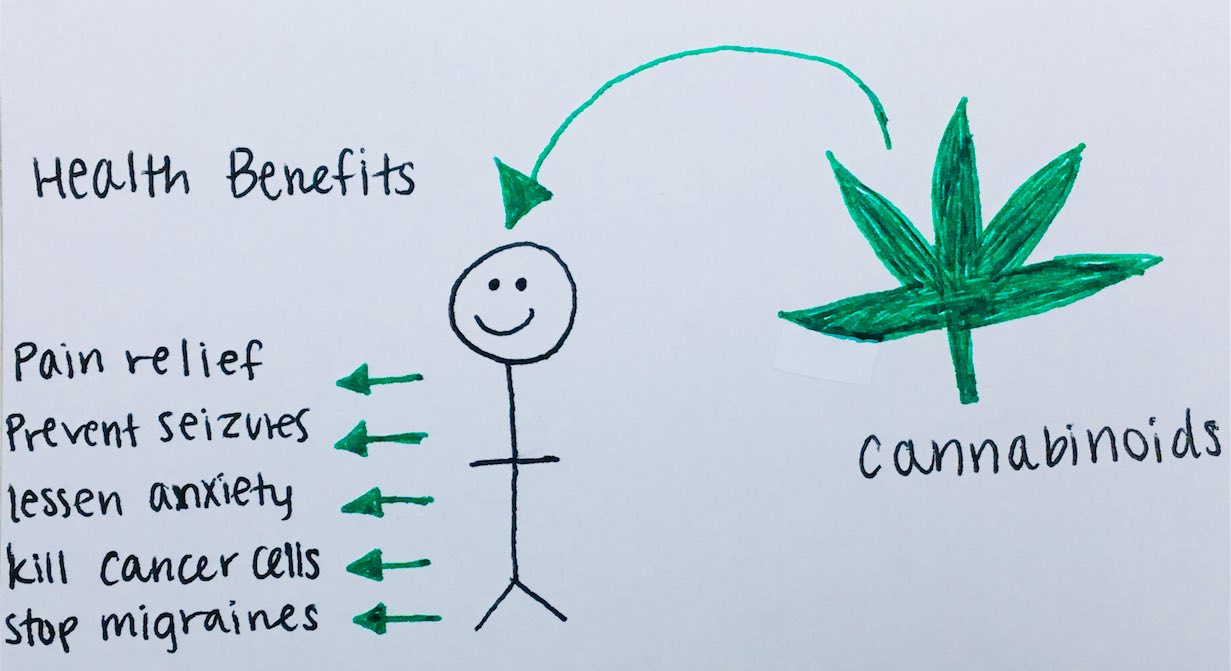Recently there has been more and more talk about the legalization of medical marijuana. There is a push for it because it can be used to treat pain, and it is less addictive than opiates. The cannabis plant (marijuana) contains molecules called cannabinoids that have many health benefits, however, many people are still against the legalization of medical marijuana because of the psychoactive (mind-altering) effects that it has.
What are cannabinoids?
It is important to understand the role of cannabinoids in the body. Cannabinoids that are produced naturally within our bodies are referred to as endocannabinoids. Endocannabinoids are molecules synthesized from the phospholipids in the membranes of post-synaptic neurons in the central nervous system and the peripheral nervous system.
What do cannabinoids do in the body?
The two most common endocannabinoids are anadamide and 2- AG. Once they are synthesized, these endocannabinoids are released from the post-synaptic neuron and travel back to the pre-synaptic neuron to bind to their CB1 (in the brain) or CB2(other parts of the body) receptors and decrease the calcium influx into the pre-synaptic neuron. Blocking the influx of calcium inhibits the presynaptic neuron from releasing its neurotransmitters, thus preventing subsequent signaling.
Cannabinoids as treatment?
Endocannabinoids play a very important role in the inhibition of signaling throughout the body, and can therefore help do things like reduce pain, decrease anxiety, prevent seizures, stopping migraines and even killing cancer cells. Certain medications increase the effects of endocannabinoids by inhibiting the enzymes that degrade them. Other medications will target the reuptake receptors so that endocannabinoids will remain in the synaptic cleft for longer and their effects will last longer.
The role of marijuana
In addition to these medications, the cannabis plant (marijuana) could be used to increase the levels of cannabinoids in the body. The cannabis plant contains over 60 cannabinoids related to THC, including cannabidiol, cannabinol, and β-caryophyllene. Cannabinoids can be inhaled or ingested, and once in the body will bind to the endocannabinoid receptors in a similar fashion as the endocannabinoids. This leads to inhibition in the pre-synaptic neurons as well as the activation of pathways in the post-synaptic neurons.

Figure 1. Endocannabinoids, anadamide (AEA) and 2-AG, binding to the CB1 receptor on the pre-synaptic neuron and inhibiting the release of neurotransmitters into the synaptic cleft.

Figure 2. The health benefits of consuming exogenous cannabinoids such as THC and cannabidiol.
Medical marijuana?
Given this information, medical marijuana sounds like a great treatment option for many people dealing with chronic pain and other health problems. The only issue is that the current medical marijuana contains THC, the main active ingredient in marijuana. The cannabinoid THC has many health benefits, but it also produces psychoactive effects, which can prevent someone from going to work. There needs to be more research conducted to create a cannabinoid painkiller that doesn’t cause a high.
Improvements with treatment
There needs to be more research on finding a cannabinoid that has health benefits, but does not cause the psychoactive symptoms. Currently research is difficult for scientists because the regulations on marijuana are so strict that researchers have limited access to the plant. Marijuana is currently listed as a schedule 1 drug, along with other substances such as heroin, ecstasy and LSD, meaning it is a highly controlled substance.
Hope for cannabinoid medication
A better, safer form of medical marijuana needs to be developed so that the FDA will approve it and then medical insurance can cover it. Once it is safer to use, the access to it will also improve because more locations will be able to dispense it. The development and legalization of medical marijuana would be very beneficial to many people dealing with chronic pain, anxiety, migraines, seizures, and even cancer.
For more information on endogenous cannabinoids, please visit:
https://moodle.cord.edu/pluginfile.php/625296/mod_resource/content/0/endocannabinoids.pdf
Figure 1. Image address: https://resize.mantisadnetwork.com/mantis-ad-network/image/fetch/w_750,q_75,c_limit,f_jpg/http://uploads.medicaljane.com/wp-content/uploads/2015/06/health.png
Help Without the High: The Journey to the Legalization of Medical Marijuana
